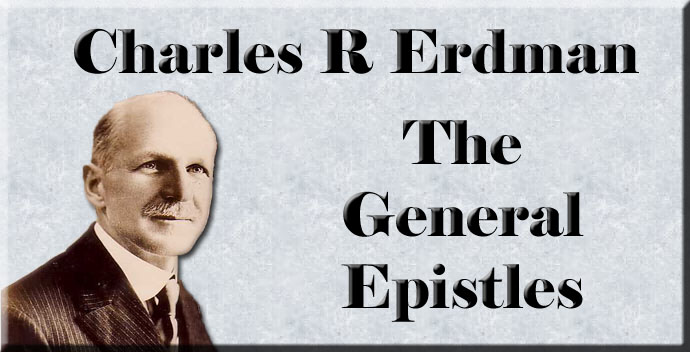
The General Epistles
By Charles R Erdman
The Third Epistle of John
|
This precious little fragment of the past may well engage our thoughtful review, for it contains pen portraits from the Apostolic Age which the passing of centuries has not dimmed, which reflect the life of the early Church, and which bring to Christians of every age and land messages of encouragement and warning and cheer. The first of the portraits is that of Gaius, apparently a wealthy householder, whose Christian faith has been shown by his generoisity toward his Christian friends and particularly by the hospitality he has shown to certain traveling evangelists or preachers. These brethren were strangers to him; but "for the sake of the Name" he has received them into his own home, and this, too, in spite of evident opposition from a prominent member of the Church who attempted to prevent this exercise of Christian courtesy. To him the aged Apostle John writes this letter, to commend him for his gracious hospitality and to encourage him to speed these visiting messengers on their journey, and that, too, in a manner "worthily of God," and worthily of their sacrifice and worthily of their high service. The picture of Gaius is thus that of a consistent, spiritual, charitable believer, who by the grace of hospitality is strengthening the Church and furthering the gospel of Christ. The second portrait is that of Diotrephes, a man whose pride of place and pride of intellect threaten to wreck the peace and prosperity of the Christian communion. In his presumptuous self-confidence, he has opposed the teaching and the authority of the aged and revered apostle. He has given no heed to the message of John, he has attacked him maliciously "with wicked words," he has refused hospitality to his messengers, and has attempted to exclude from the Church those who were to receive these messengers into their homes. It is a pitiful picture of overweening ambition, of conceit, of arrogance, of tyranny, and of the love and abuse of power. There is a third sketch. It is of one, Demetrius, who appears to be the bearer of the letter, a man held in universal esteem by his fellow Christians, whose life accords with his profession, who has the special commendation of the inspired Apostle John. Underneath these last two pictures John writes a significant motto: "Beloved, imitate not that which is evil, but that which Is good." Such are the three pen portraits contained In this little letter; but In sketching them the writer has drawn unconsciously a picture of himself. We see him bending under the weight of 3^ears, burdened with the care of the churches, sustained by love for Christ and his cause, comforted by the sympathy and devotion of faithful friends, zealous for the spread of the gospel, boldly rebuking error and ready to discipline offenders, but tender In his affections and confident in the triumph of truth. No less striking Is the picture of the early Church which the epistle portrays. It appears as a household of brethren, united by bonds of Christian love, separated from the unbelieving world, extending Its Influence by unselfish service and by gracious hospitality, not free, however, from the perils of ambition and jealousy and faction among its members, but guarded and guided by men of apostolic gifts and graces, strong in love, rejoicing in truth, devoted to Christ. The letter might be outlined as follows;
|
|
 |
 |
|
|
|
-
Site Navigation
 Home
Home What's New
What's New Bible
Bible Photos
Photos Hiking
Hiking E-Books
E-Books Genealogy
Genealogy Profile
Free Plug-ins You May Need
Profile
Free Plug-ins You May Need
 Get Java
Get Java.png) Get Flash
Get Flash Get 7-Zip
Get 7-Zip Get Acrobat Reader
Get Acrobat Reader Get TheWORD
Get TheWORD